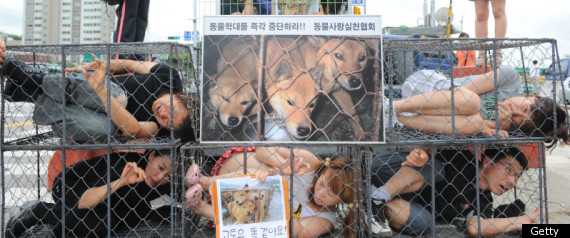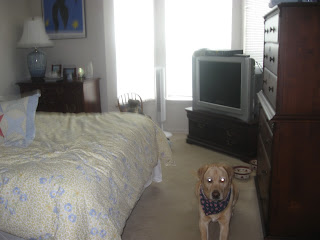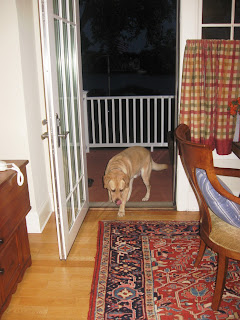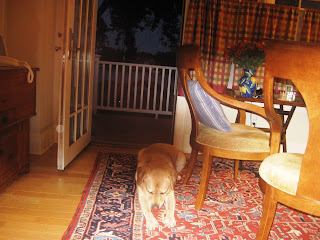Tips for fighting canine cancer
Dog cancer, like people cancer, is the uncontrolled growth of cells on or inside the body. Cancer cells develop as a result of damage to DNA. Dogs can inherit damaged DNA, which accounts for inherited cancers, but more often, a dog's DNA becomes damaged by exposure to something in the environment, like smoke, pesticides, chemical food additives and preservatives or other carcinogens.
Cancer rates typically increase over time, and it is the leading cause of death in dogs over 10 years of age.
The 42 Rules to Fight Dog Cancer, by Aimee Quemuel is a compilation of tips, advice, treatment plans and real dog cancer success stories told by 21 different dog owners. The companion website offers a searchable database so owners can see what others have done to help heal their dogs from cancer. Quemuel calls the project a "true passion" rather than a money maker and she is donating 100 percent of her proceeds to dog-related causes, including The Magic Bullet Fund, Canine Cancer Awareness, National Canine Cancer Foundation and The Morris Foundation. For each story added the website, she will donate $1.
"Originally, the book and the site were going to focus on my personal journey and my dog Cody's cancer success story," explains Quemuel. "But I soon discovered that there were many dog cancer success stories to be told."
If you or someone you know has a dog that has recently been diagnosed with cancer (or if you are keen on prevention), here is some advice from Quemuel's book:
Seek Out Support - Fighting canine cancer is not one-size-fits-all, and someone's dog cancer story may be just the inspiration you need to try a different treatment that may save your dog's life. There are dozens of support groups to check out. Some are focused on specific cancer types and others on dogs actively living with cancer, while some are purely for support once your dog has passed over the rainbow bridge. While members are typically not experts, they can provide unique knowledge, experience and support that a veterinarian may not be able to offer.
Set Goals - Dealing with cancer is emotional, confusing and overwhelming. Stay on track by setting a specific goal for each vet visit. If you are a list person, go to each appointment with a written list of very specific questions. The goal of each visit will depend on your specific stage in the cancer battle.
Keep an Open Mind - Whether you believe in Western or Eastern modalities, when it comes down to it, the goal is more quality time with your dog. Take the best from both worlds. Support your dog's immunity and remove toxins with foods and supplements, but also consider whether or not chemotherapy or surgery will help in your fight.
Avoid Grains - Research shows that animals with cancer have an altered carbohydrate metabolism, so a diet that is low in carbohydrates and that contains high-quality proteins and fish oil as the primary fat source will best meet the needs of the animal cancer patient. Many veterinarians blame grain-based diets for diabetes, digestive problems and cancer, so you may want to steer clear of corn, wheat and rice. Most commercial dog food and dog treat companies use grains as filler. Check labels carefully.
Boost Immunity - There are lots of supplements touted to fight dog cancer. Do your research to find the ones that makes sense for you and your dog. And always check with your vet to be sure that the supplements you include as part of your treatment plan won't have an adverse effect on your pooch. Some to consider include: mushrooms, turmeric, spirulina, chlorella, flax seed and L-Glutamine.
Filter Your Water - A December 2005 analysis of more than 22 million tap water quality tests, most of which were required under the federal Safe Drinking Water Act, found that water suppliers across the country detected 260 contaminants in public tap water with more than half of them linked to cancer, reproductive toxicity, developmental toxicity or immune system damage. Also, because just like humans, a dog's largest organ is the skin, consider installing a water filtration system where you give your dog a bath.
Detox Your Dog - Studies have shown that many chronic conditions such as cancer or neurological challenges can result from an overload of heavy metals, pesticides and other toxins in our environment. There are natural supplements, such as milk thistle and liquid zeolite, that help in removal of toxins, but you can also stimulate the lymphatic system to help facilitate the process. You can move the lymphatic system through exercise, acupuncture, massage and just plain old brushing. (Some experts warn that acupuncture might stimulate and reawaken cancer in dogs in remission, so talk with your vet or animal health practitioner first.)
Go Green When You Clean - According to the Environmental Working Group April 2008 report, "Dogs and cats were contaminated with 48 of 70 industrial chemicals tested, including 43 chemicals at levels higher than those typically found in people." While humans are vulnerable to the effects of perpetual exposure to chemicals, including those in common household products, dogs are at even greater risk due to their faster metabolisms, smaller body sizes, and direct contact with the floor and furniture. There are many safe cleaners now available, or a simple solution of vinegar and water works to clean just about anything.
Keep Fleas and Ticks Away Naturally - Frontline, Advantage, flea collars and other traditional flea remedies all contain low-grade poisons. In a healthy dog, the effects of flea and tick pesticides are not immediately apparent (though one could argue that they slowly decrease a dog's immunity). However, in a dog fighting cancer, they could prove deadly. There are plenty of natural alternatives that kill fleas and are safe for your dog. You can find natural flea products at the pet store or you can make your own. Here is one recipe:
• 2 cups of water; let steep overnight; then strain into a spray bottle)
• • 5 drops of cedarwood oil (effective at repelling ticks and fleas)
• 5 drops of citronella oil
• 5 drops of peppermint oil
• 1 dropper full of rosemary extract
• 1 dropper full of vitamin E (acts as a natural preservative)

















































